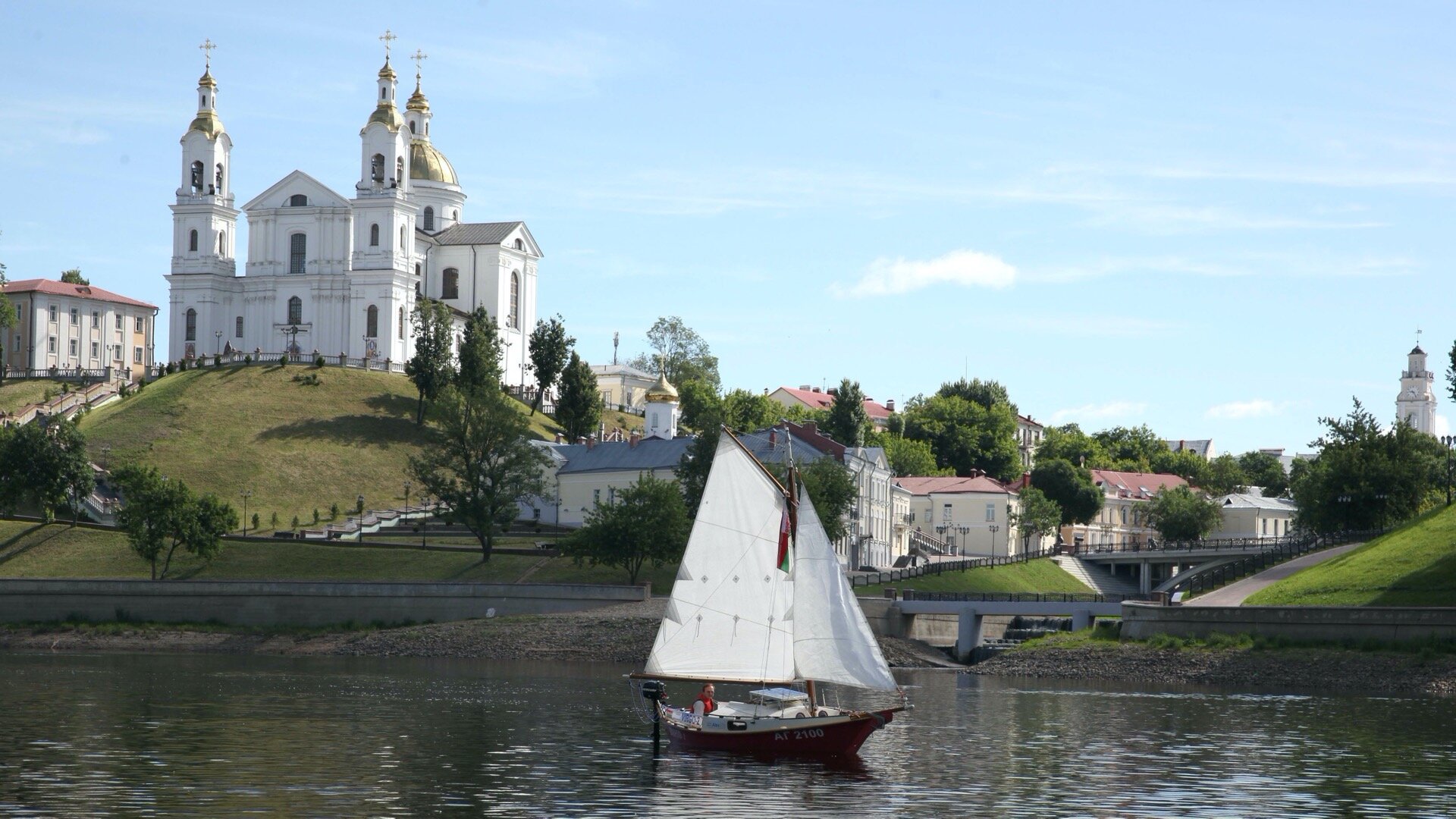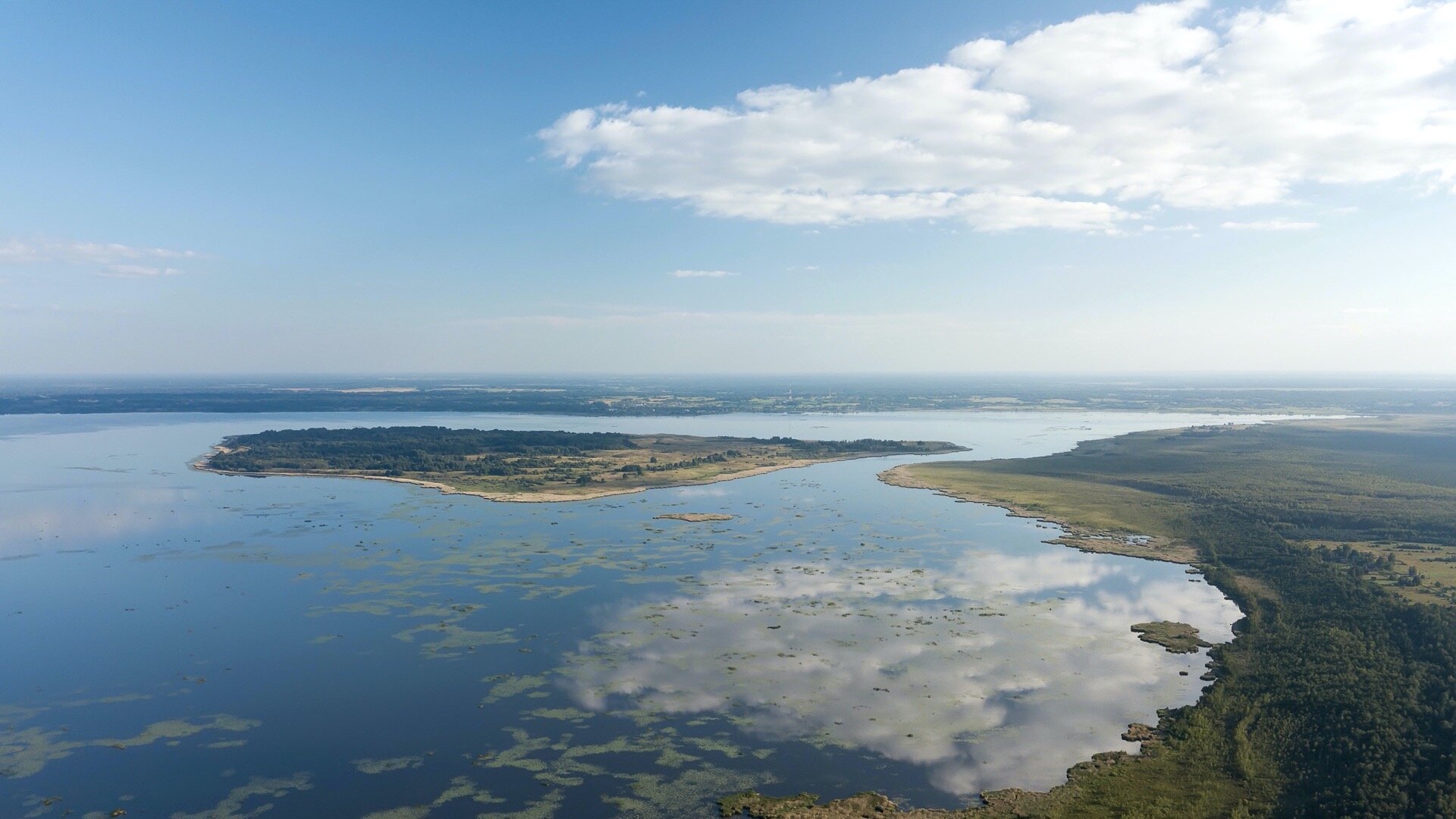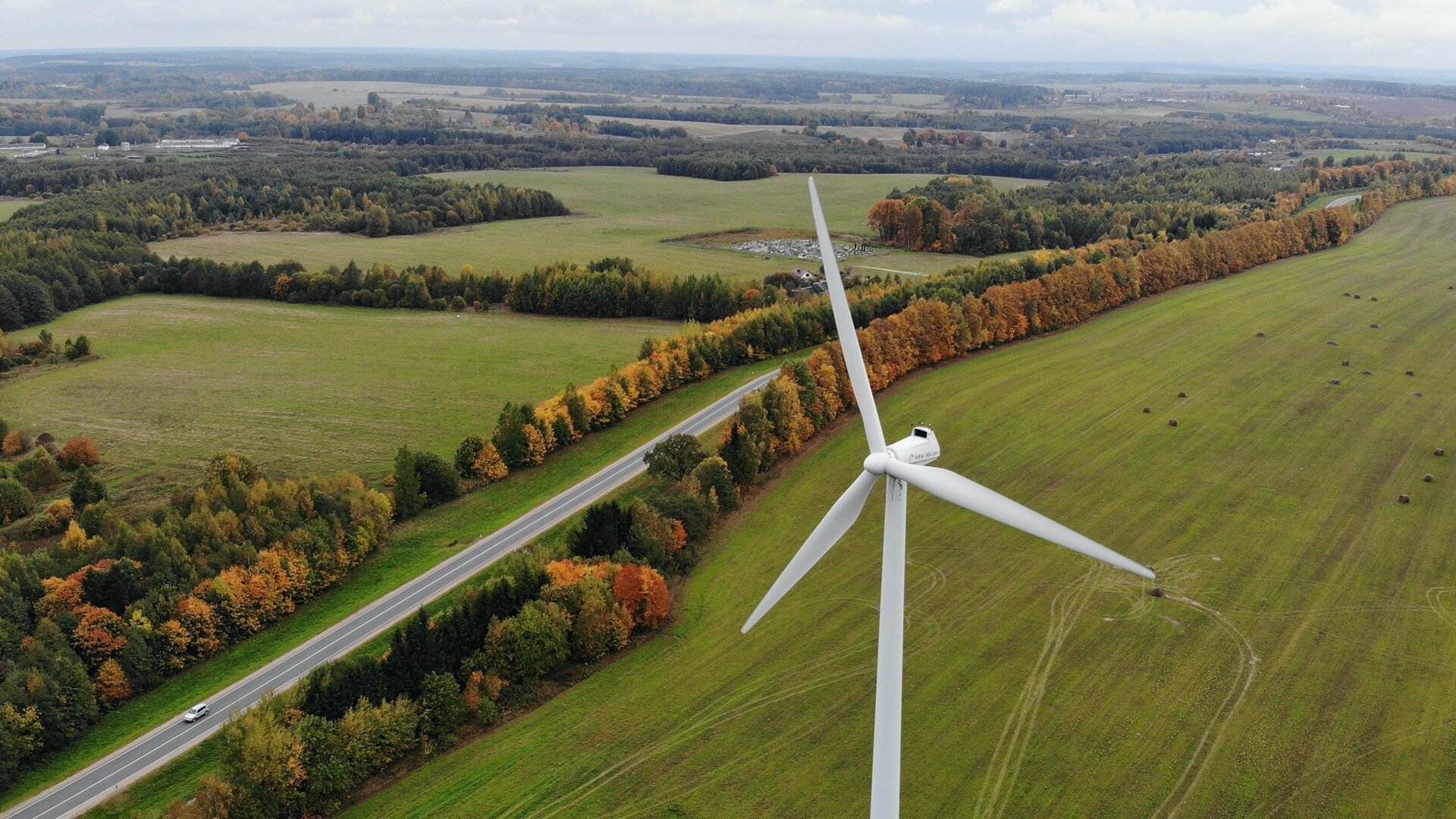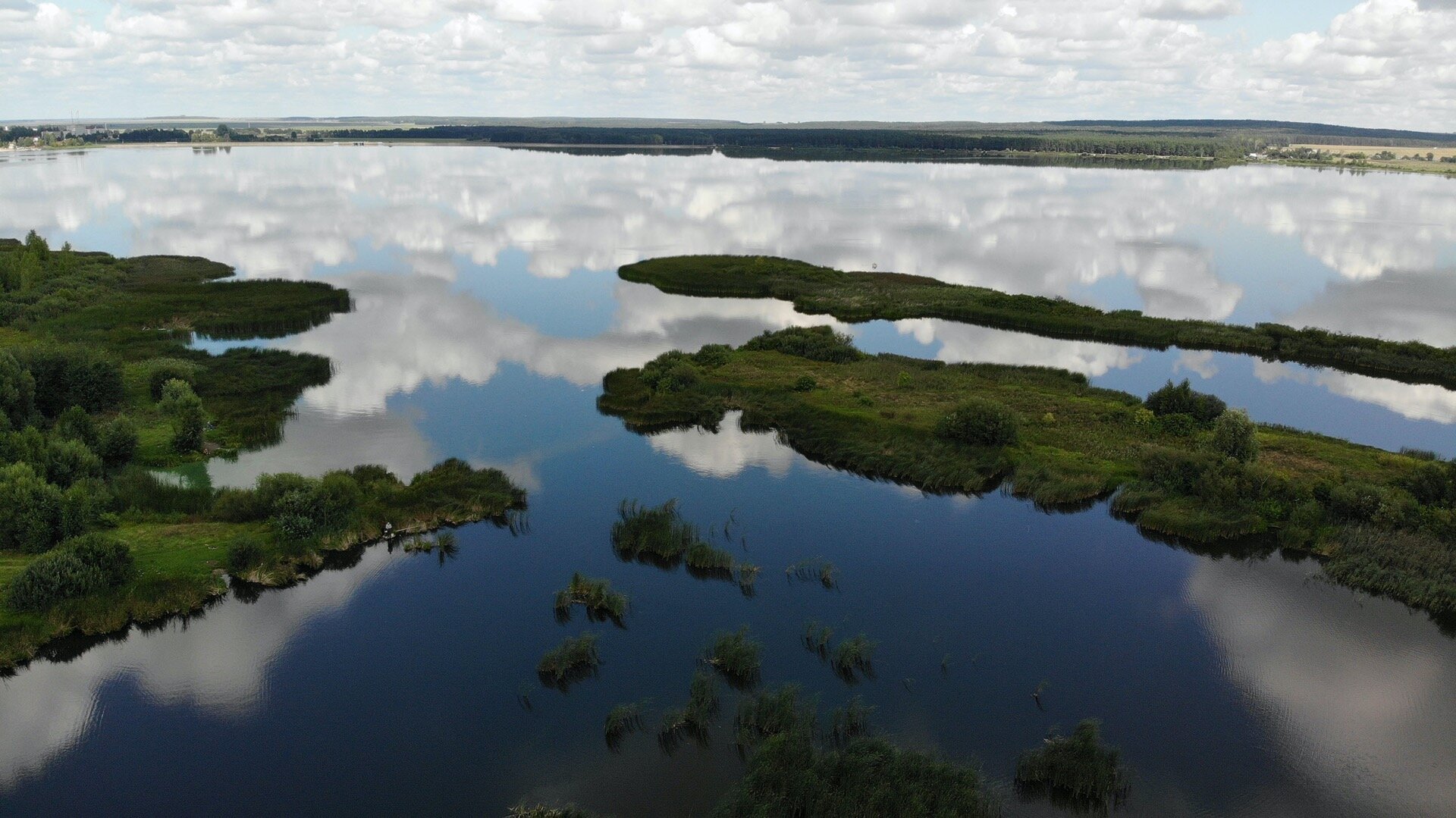Vitebsk Oblast
History, interesting facts

This region in the north of Belarus is widely renowned far beyond its borders for a great variety of picturesque lakes, farm stays in forested areas, the international art festival Slavianski Bazaar in Vitebsk and many exceptionally talented locals.
Vitebsk Oblast is the native birthplace of the first woman to be recognized in Belarus as a saint - Euphrosyne of Polotsk, as well as Francysk Skaryna, the founder of East Slavic printing and an enlightener, Lew Sapieha, the Great Hetman of the Grand Duchy of Lithuania, and Marc Chagall - a world famous artist.
In 1954, Aleksandr Lukashenko, the first President of the Republic of Belarus, was born in the town of Kopys, Orsha District, Vitebsk Oblast.
Vitebsk Oblast is the birthplace of Belarusian statehood. In the 9th century this region saw the establishment of the first state formation in the Belarusian land – Principality of Polotsk.
Founded in 862 on the banks of the Western Dvina River, the city of Polotsk is the most ancient city of Belarus. Its long history was marked by a heroic struggle against the invasions of the Vikings, crusaders and a great many of other conquerors.
The legend says that the city of Vitebsk was founded in 974 by Saint Princess Olga, Equal-to-the-Apostles.
In Vitebsk Oblast you can see the massive boulder stones that were unique worship objects in pagan cultures. The largest of them is found in Shumilino District near the villageof Gorki. It is 11 meters long, 5.6 meters wide and 3 meters high. The substructure of the boulder is known to be at least three meters deep. The most outstanding one is the Boris Stone in Polotsk. It was found in 1981, 5km away from the town and placed near the Saint Sophia Cathedral.
Vitebsk Oblast has the smallest town in the country - Dzisna - with the population of 1,386.
Geography

Vitebsk Oblast is the country's northernmost area. It borders on Latvia in the northwest, Lithuania - in the west, and the Russian Federation - in the north and east.
The region covers the area of 40,100 km². The northernmost point of Belarus is located in Verkhnedvinsk District to the north of Osveya Lake. Its coordinates are 56°10'N and 28°07'E.
There are two points in Vitebsk Oblast that can be considered the geographical centers of Europe. The estimates of scientists as of 2000 say that the first one is in the middle of Sho Lake. What is more, a memorial signpost was set up in the center of Polotsk in 2008 to signify that the continent's center is in this city.
The Lake District near Braslav has over 10 kinds of terrains after an ancient glacier passed through the area, and it is the area's distinct feature. Vitebsk Oblast is also characterized by picturesque hills, moraines, numerous swamps, rivers, and lakes.
Administrative and territorial division
- 21 districts (Beshenkovichi, Braslav, Verkhnedvinsk, Vitebsk, Glubokoye, Gorodok, Dokshitsy, Dubrovno, Lepel, Liozno, Miory, Orsha, Polotsk, Postavy, Rossony, Senno, Tolochin, Ushachi, Chashniki, Sharkovshchina, Shumilino) and 3 districts in Vitebsk;
- 2 cities of oblast subordination (Vitebsk, Novopolotsk);
- 17 towns of district subordination;
- 22 urban-type settlements;
- 6,167 rural settlements, including 245 agrotowns.
Vitebsk Oblast has 196 primary-level councils of deputies.
Vitebsk is the capital city of the region.
Population
As of 1 January 2024, Vitebsk Oblast had the population of 1,081,911, including 852,477 urban residents and 229,434 rural residents.
The capital of the region has 358,395 residents; Vitebsk is the second oldest city in the country.
Other major cities in the region are the following: Orsha with 102,759 residents, Novopolotsk (95,717), Polotsk (79,579).
The biggest agrotowns are Babinichi (3,396) and Novka (3,345).
Economy

Vitebsk Oblast has a highly developed industrial sector. The industrial sector employs a quarter of the working population and accounts for 28.9% of the gross added value.
The main industries are oil refining and chemicals manufacturing, energy production (Lukoml State District Power Station and Novopolotsk Cogeneration Plant), food and beverages, textiles, clothing, and footwear.
Vitebsk Oblast has over 1,300 industrial enterprises. The region’s flagship companies are: Naftan, Polotsk-Steklovolokno, Belwest, the management company of the Belarusian Footwear Holding Company Marko, Dolomit, Vitebsk Meat and Dairy Products Concern, Vitebsk Carpets, Energokomplekt, Vityaz.
Vitebsk Oblast has 216 agricultural enterprises. The leading companies are: MayakBraslavsky, Shaiterovo, Vitebsk Broiler Poultry Factory, Larinovka, Agrokombinat Yubileiny, Mayak Vysokoye, Khotily-Agro, Polymir-Agro, P-S Karpeki, Virovlyansky branch of the Detskoselsky-Gorodok company.
Vitebsk Oblast is the country’s major center of flax farming. Locals describe this crop as “golden fleece”. Vitebsk is home to Orsha Linen Mill, the CIS’ largest flax mill, which is widely renowned for its products in many countries.
Belarus is one of the leading flax fiber manufacturers. These gentle blue flowers are one of the symbols of Belarus and are featured in the National Coat of Arms of the Republic of Belarus.
Vitebsk Oblast specializes in growing such crops grain, fodder crops, rapeseed, and potato and lake fish farming.
The region has established foreign trade cooperation with 118 countries. Major exports include bituminous mixes, petroleum products, liquefied gas, fiber glass, footwear, meat and dairy products.
The region is located at the crossroads of several transport corridors: the motorways Berlin-Warsaw-Orsha-Moscow and Helsinki-Vitebsk-Kiev-Odessa. Vitebsk Oblast has road and rail connections with Moscow, Saint Petersburg, Riga, and Vilnius.
The free economic zone Vitebsk was established in August 1999.
Natural and mineral resources

Vitebsk Oblast ranks first in Belarus in terms of the area covered with lakes as well as their number. It has over 2,800 lakes (Osveya Lake, Lukoml Lake, Drivyaty Lake, Neshcherdo Lake, Snudy Lake are the largest ones) and over 500 rivers (the Western Dvina, the Dnieper, the Drisa, the Obol, the Disna, and other rivers).
A third of the territory is covered with forests, where 60% are century-old coniferous ones. Vitebsk Oblast has 1 wildlife sanctuary, 2 national parks, 25 national and 67 regional reserves, 230 natural landmarks.
The Berezinsky Biosphere Reserve has been included into the UNESCO Biosphere Reserves and awarded with the European Diploma of Specially Protected Areas.
The republican landscape reserve Yelnya is one of the largest ancient upland swamps and glacier lake areas in Europe. This specimen of nature with unique flora and fauna enjoys the international conservation status. The Yelnya Swamp that has existed for over 9,000 years already and occupies almost 20,000 hectares is a matter of special pride.
The national park Braslavskie Ozera was established in 1995.
Vitebsk Oblast is rich in mineral deposits. Dolomite, clay, peat, sand, and mineral waters are industrially produced here.
Sport and tourism
Vitebsk Oblast develops 47 sports.
There were many Olympic champions among Vitebsk Oblast natives: Romuald Klim (athletics, 1964), Viktor Kurentsov (weightlifting, 1968), Larisa Petrik (artistic gymnastics, 1968), Tamara Lazakovich (artistic gymnastics, 1972), Sergei Kopliakov (swimming, 1980), Tatyana Beloshapko (Ivinskaya) (basketball, 1980), Vyacheslav Yanovsky (boxing, 1988), Uladzislau Hancharou (trampolining, 2016), Iryna Kryuko (biathlon, 2018).
Vitebsk Oblast promotes various types of tourism including cultural and educational tourism, sport tourism, religious tourism, hunting tourism, industrial tourism, recreational tourism, festival and culinary tourism.
Vitebsk Oblast is the only one in Belarus to be included in the European Network of Culinary Heritage that promotes local cuisine, traditional dishes and recipes. Five districts of Vitebsk Oblast represent Belarus in the European Network that unites over 1,500 participants from 44 European regions, which are Miory District, Verkhnedvinsk District, Glubokoye District, Polotsk District, and Lepel District.
The tourism infrastructure in Vitebsk Oblast has been rapidly developing. It has 91 hotels and other accommodation facilities, 469 farm stays, 35 hunting and fishing lodges.
Vitebsk Oblast has 9 health resorts, including the Lepel Military Sanatorium, the resort centers Plissa, Lettsy, Zheleznodorozhnik, Lesnoye, Borovoye, Rosinka, Forest Lakes, and Naftan.
Culture and major sights

Vitebsk Oblast has a rich cultural heritage, including 28 museums, 2 theaters, and one philharmonic hall are located here.
The remains of Bely Kovel Castle still survive in Vitebsk Oblast (the agrotown of Smolyany, Orsha District). So do the earthwork castle fortifications in the agrotown of Drutsk (Tolochin District) and the town of Disna (Miory District).
Vitebsk Oblast has two objects included in the UNESCO provisional list: Holy Transfiguration Church in Polotsk and the Catholic Church of Saint John the Baptist in the village of Kamai, Postavy District.
The Holy Annunciation Church of the 12th century in Vitebsk, Saint Sophia Cathedral of the 11-18th centuries and the Convent of the Savior and St Euphrosyne of the 12-18th centuries in Polotsk, the Epiphany Kuteinsky Monastery of the 17th century in Orsha, the Holy Nativity of the Theotokos Cathedral and the Trinity Church of the 17-18th centuries in Glubokoye are only part of numerous cultural sights in the region.
Tourists should definitely visit the Marc Chagall Museum in Vitebsk, Ilya Repin’s country-house museum Zdravnevo, the memorial complex Proryv (Breakthrough), which is one of the greatest works in the monumental art of the BSSR.
Every year the region hosts about 50 different festivals with artists coming to participate from CIS and non-CIS states. The region's signature event is the international art festival Slavianski Bazaar in Vitebsk.
Religion

The Republic of Belarus respects freedom of faith and religion as an inalienable right of its citizens, which translates into the country's great variety of religious denominations. Christianity is the most widely-spread religion in Belarus. The largest Christian communities in Vitebsk Oblast are Orthodoxy, Catholicism and Evangelism. Adventism and Lutheranism prevail among other religious denominations. Vitebsk Oblast has a total of 18 religious denominations, including 565 religious communities.